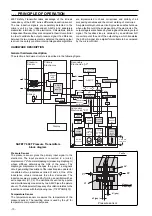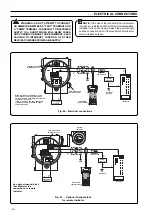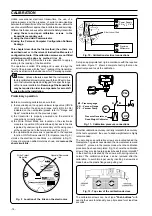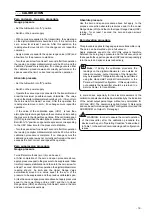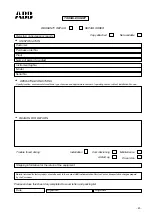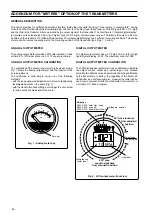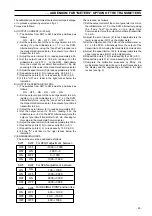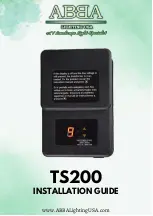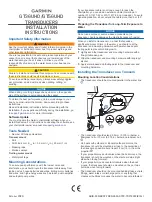
- 13 -
WARNING - For installation in Hazardous Areas,
i.e. areas with danger of fire and/or explosion, prior to
making electrical connections, ensure compliance with
safety information on the Safety Marking plate. Failure to
comply with this warning can result in fire or explosion.
Signal terminals are located in a separate compartment of the
secondary unit housing. The housing incorporates two con-
nection ports for cable glands or conduit fittings. They are
protected with a temporary plastic plug for transit purpose
which should be replaced with a suitable permanent plug in the
unused port. Connections can be made by removing the cover
(indicated in Fig. 7); first screw down the locking screw located
below the cover, using a 3 mm Allen Key.
WARNING - For Hazardous Areas installations,the
connection of cables and conduits to the transmitter shall
be made in accordance with the requirements of the
relevant type of protection. Cables and cable-glands must
be in accordance with the type of protection.
Unused openings for connection shall be closed with
blanking elements suitable for the relevant type of
protection. With the exception of intrinsically safe
transmitters, the means provided for this shall be such that
the blanking element can be removed only with the aid of
tools. The blanking elements must be certified for the type
of protection. See standards either EN 60079-14 or IEC
79-14. The transmitter connections must also guarantee
the degree of protection of the transmitter enclosure, e.g.
IPxx according to EN 60529 standard (or IEC529). See
also the Addendum for "IP" protection (and Ex Safety)
which is part of this instruction manual.
The signal cable should be connected to the terminals marked
respectively (+) and (-). If an internal output meter - either with
analog or digital indication - is installed, it should be removed
in order to make the connection, simply by pulling it out from its
socket. After the connections have been made, reinstall the
output meter. Refer to the Meters Option addendum for
details.
The power to the transmitter is supplied over the signal wiring
and no additional wiring is required. The signal wiring does not
need to be shielded but the use of a twisted pair is highly
ELECTRICAL CONNECTIONS
recommended. The cable shield should be grounded in one
side only, to avoid dangerous earth paths.
WARNING - For Hazardous Areas installations,
when the ambient temperature is higher than 70
°
C, the
cable used for the connections must be suitable for 5
°
C
above the ambient temperature.
Normal practice is to ground in the control room side, in which
case the field side of the screen should be adequately
protected to avoid contact with metallic objects. Signal wiring
may be ungrounded (floating) or grounded at any place in the
signal loop, but for intrinsically safe installations the wiring and
grounding must follow the specific rules for this technique. The
transmitter case may be grounded or ungrounded: a ground
connection is provided internally (in the terminal compartment)
and externally.
Do not run the signal wiring in close proximity to power cable
or high power equipment; use dedicated conduits or trays for
signal wiring.
CAUTION - Do not connect the powered signal
wiring to the mA signal testing terminals as this could
damage the by-pass diode.
After the connections have been completed check the integrity
of the cover O-ring, screw down the cover and secure it by
unscrewing the safety screw.
CAUTION - Unless absolutely necessary, avoid
the removal on site of the protective cover which gives
access to the electronic circuitry. Although the electro-
nics are fully tropicalized they should not be subjected
to humidity for long periods.
WARNING - For Hazardous Location
installations, at least eight (8) threads on each cover
must be engaged in order for the transmitter to meet
(FLAME PROOF - explosion-proof) requirements.
Hand Held
Communicator
Terminals
Test Terminals
Output Meter
Socket
Short circuit link
Ground Terminal
Signal Terminals
Fig. 8a - Terminals arrangements
on Safety transmitter
Fig. 7 - Location of the locking screws and terminals
Grub screw
Secondary Unit
Cover locking
screws (in the
position indicated
by the arrows)
Primary Unit
Remove this
cover to
access
terminals










